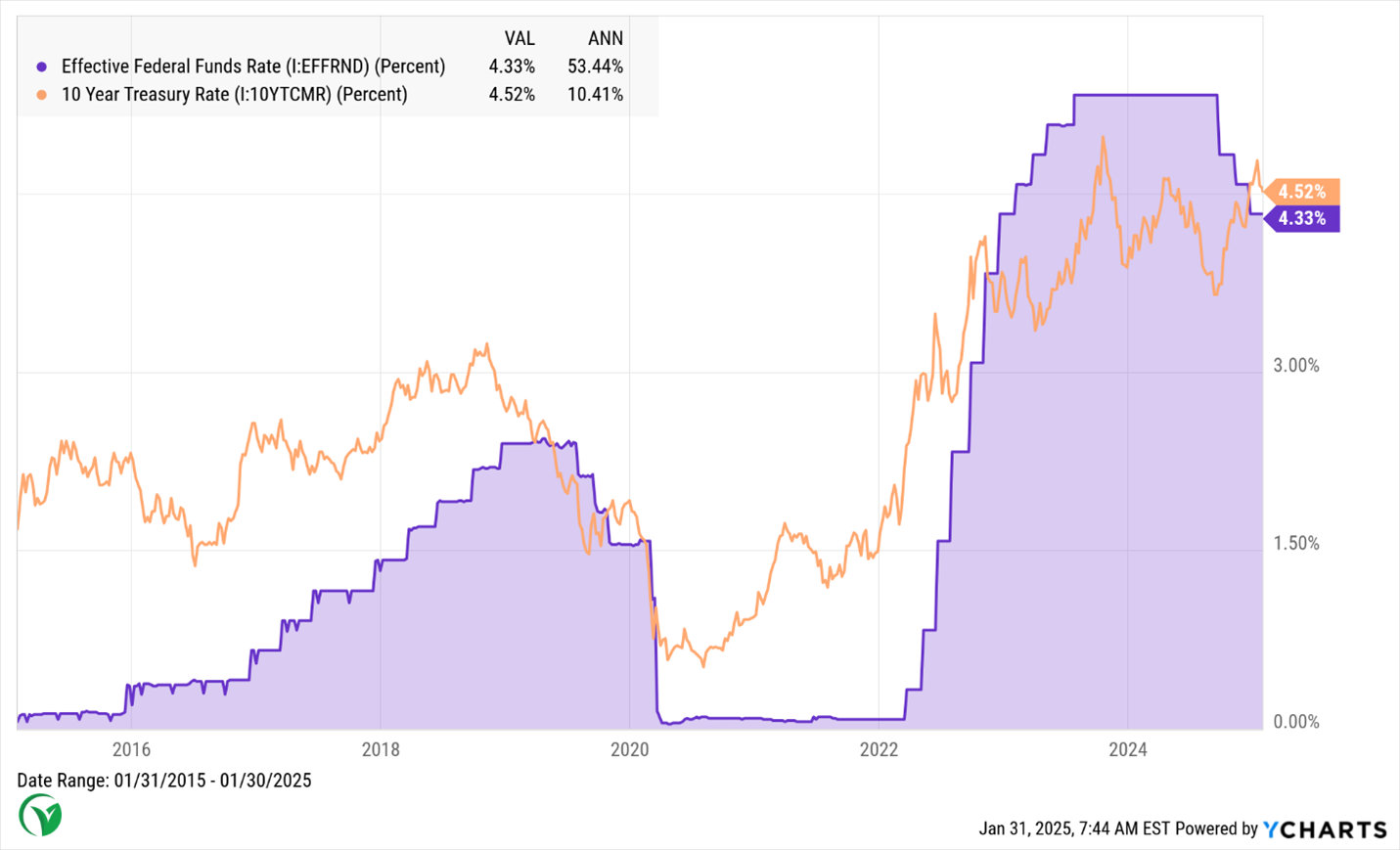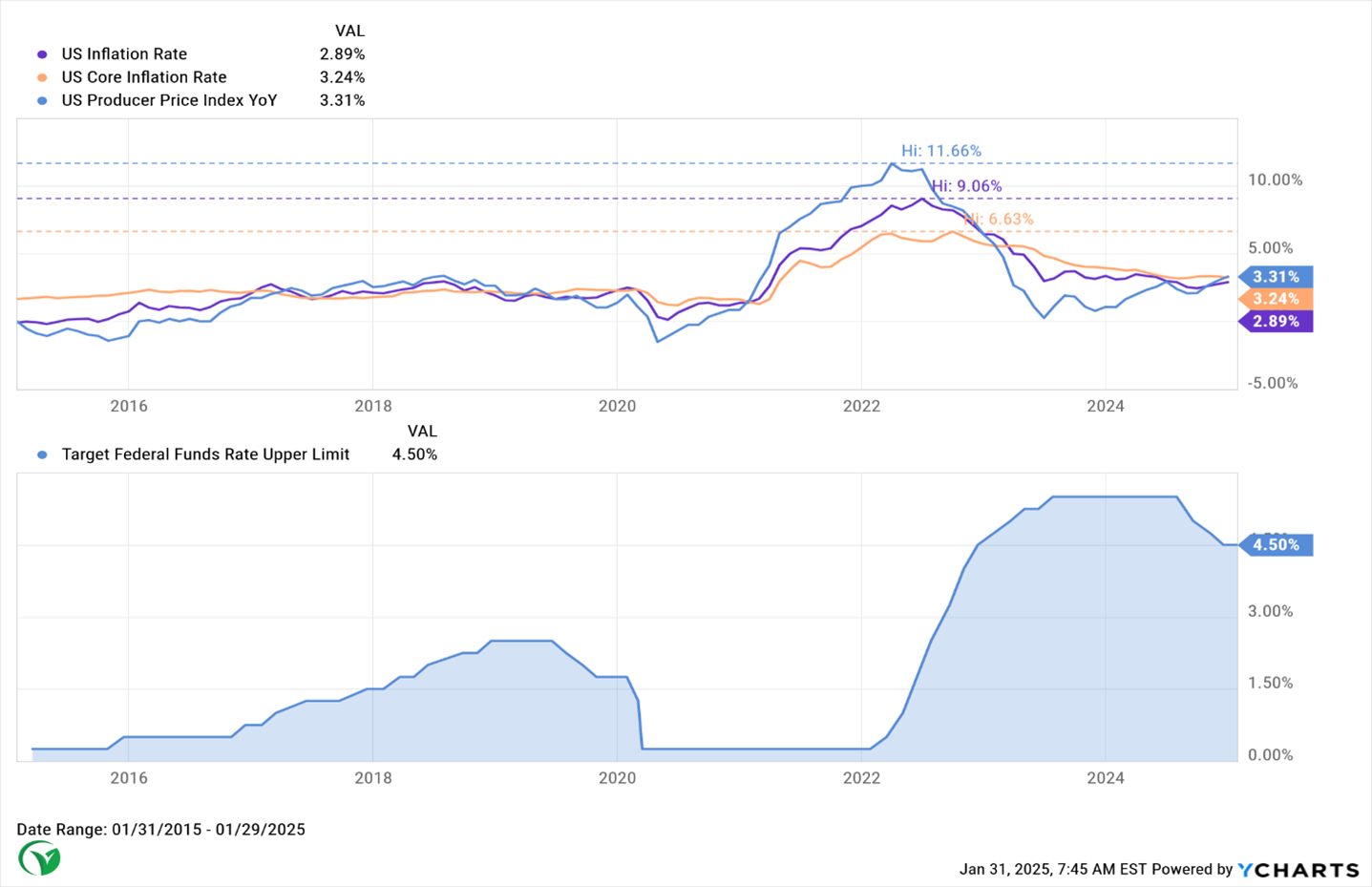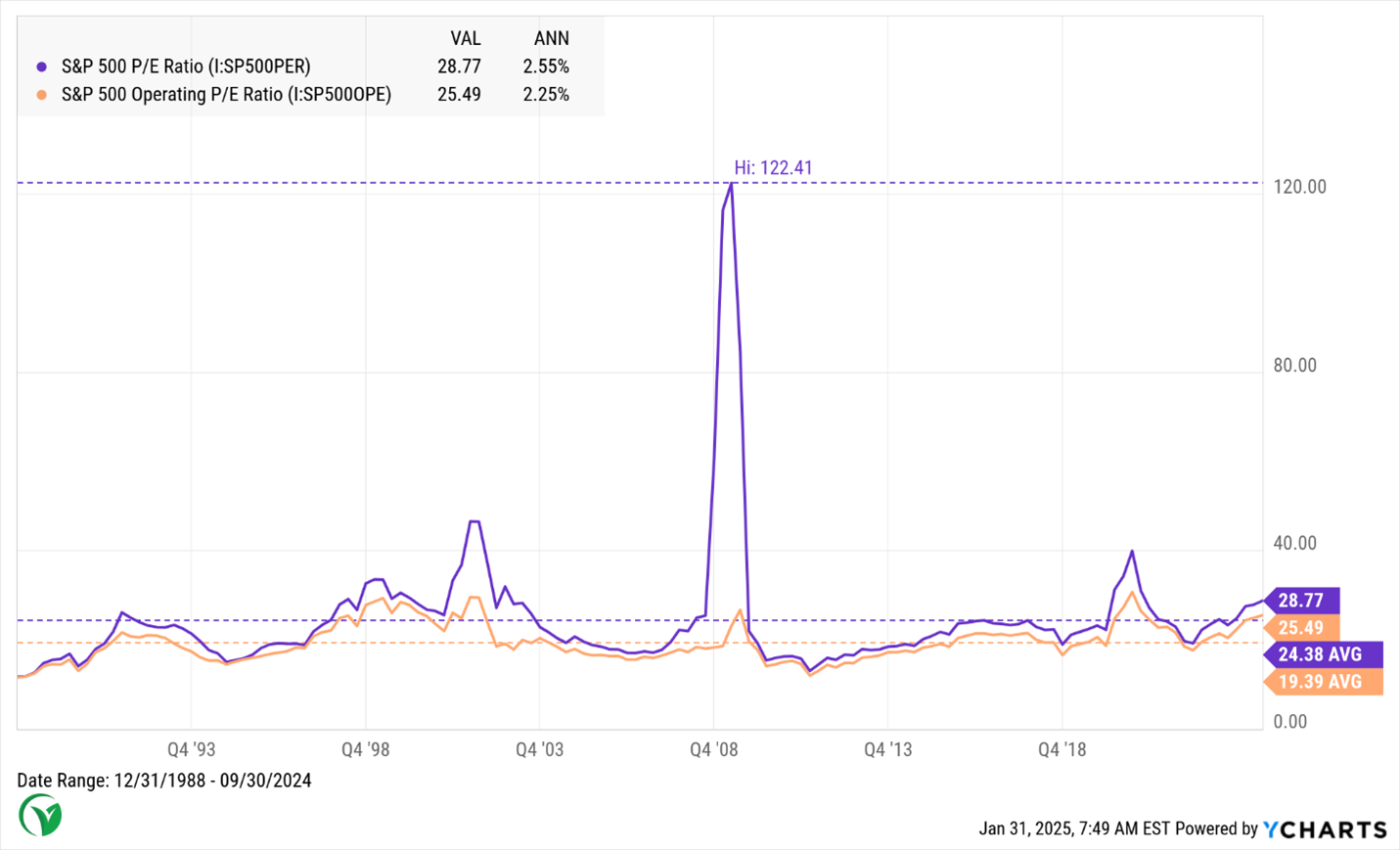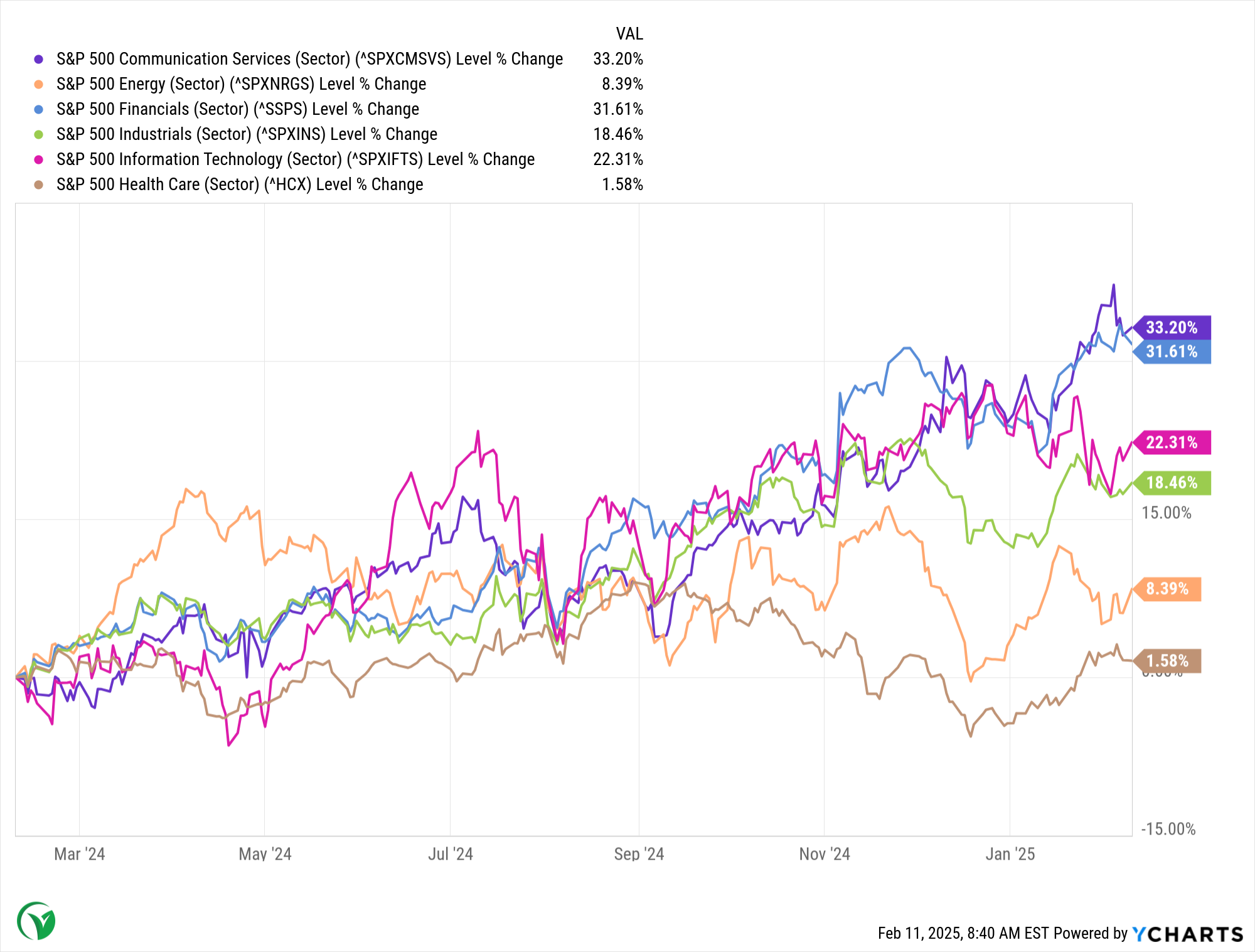

Vita Financial
Investment Committee and
Private Wealth Group
How Trump 2.0 and His Policies Impact 2025 Capital Markets
Changes in the regulatory and fiscal landscape under the 2025 administration are shaping market expectations, reinforcing the importance of policy-driven investment strategies. At Vita Financial, we emphasize sound economic policies over political shifts, ensuring that our investment outlook remains focused on long-term stability and opportunity. Deregulation in Artificial Intelligence (AI) is poised to boost innovation by reducing compliance burdens, fostering rapid advancements in generative AI, AI-led services, and data center infrastructure. This approach could accelerate growth in AI-related industries, with sectors like semiconductors, energy, and utilities benefiting from increased demand. However, the lack of stringent regulations raises concerns about ethical considerations, competition, and the long-term sustainability of AI investment returns. As AI adoption accelerates, consumer behavior is adapting to new digital experiences, shifting capital inflows toward companies that successfully integrate AI-driven efficiencies into daily consumption. Vita Financials’ research focuses on identifying firms that not only lead in technological innovation but also align with evolving consumer demand patterns
On the other hand, cryptocurrency regulation is tightening, with efforts to formalize the sector through exchange-based systems and potential frameworks for decentralized finance (DeFi). While these measures aim to reduce market manipulation and enhance transparency, they may also introduce challenges for rapid innovation in this space, impacting market dynamics.
The administration’s proposed tariff and taxation policies target key trading partners, including Mexico, Canada, and China, with tariffs of up to 25% aimed at protecting domestic industries and generating additional revenue. While this may temporarily bolster sectors like manufacturing, it also risks escalating trade tensions and increasing input costs for businesses. This is evident in the recent 40% surge in arabica coffee prices due to uncertainty surrounding trade policies. Additionally, manufacturers and traders are accelerating imports from the EU to preempt potential tariffs, which could distort short-term trade flows and supply chains, adding volatility to commodity and equity markets. Alternatively, we see these proposed tariffs as a strong negotiation tactic for the administration to utilize to balance further the international trade dynamic in the United States favor and assist with the reduction of illicit drug transportation across US border
The establishment of the Department of Government Efficiency (DOGE) underscores the administration’s focus on reducing federal spending in healthcare, defense, and social security. Healthcare companies reliant on federal programs may face pressure to innovate with cost-efficient solutions like telemedicine and AI diagnostics. Defense contractors may see reduced budgets for large-scale projects, favoring cost-effective technologies such as drones and robotics. Social security cuts could also affect industries serving senior citizens, requiring businesses to adapt to shifting demand. For investors, these policy shifts necessitate identifying companies that can align with the administration’s focus on efficiency, innovation, and adaptability, ensuring their portfolios are well-positioned for 2025 and beyond.
Growth, Inflation, and GDP Forecasts for 2025, and their Capital Market Impacts
The macroeconomic outlook for 2025 reflects a “Goldilocks economy,” where steady GDP growth, low unemployment, and manageable inflation set a constructive stage for economic stability. Inflation is projected to average 2.48% (PCE), with core inflation slightly higher due to persistent pressures in energy and food prices. While some short-term upward movement in inflation may occur from policy actions in early 2025, the overall trajectory remains within a comfortable range, supporting a stable economic environment.
GDP growth is forecasted at 2.05%, up from previous estimates of 1.92%, as government initiatives such as universal basic income and expanded healthcare are expected to boost consumer confidence and spending, which constitutes 68% of GDP. Unemployment is projected to remain stable at 4.24%, with payrolls continuing to expand by an average of 133,000 jobs per month, further underpinning economic momentum.
Interest rates are likely to see limited cuts, with mid-2025 Federal Reserve rates estimated at 4.1%, easing slightly to 3.86% by year-end. Meanwhile, Treasury yields are forecasted at 4.45% midyear and 4.37% by December, offering favorable returns above inflation levels and presenting attractive opportunities for bond investors. This balanced economic scenario highlights the resilience of the US economy while offering measured optimism for capital markets.

Fig. 1.1 – Federal Funds Rate Vs 10 Year Treasury Rate

Fig. 1.2 – Inflation and Target Federal Fund Rate
What Earnings Risks Do You See in 2025?
Earnings risks in 2025 remain elevated, driven by high market valuations. The S&P 500 trades at a P/E of 28.77, up from 23.27 one year ago, while the Russell 2000 trading at P/E of 35.06 compared to 27.23 last year. Comparing the S&P 500 earnings yield (E/P) to current US 10-year Treasury yields at 4.55%, the equity risk premium appears unattractive, reducing the incentive for investors to favor equities over bonds. These stretched valuations, coupled with subdued risk premiums, could pressure market returns and heighten sensitivity to economic or earnings shocks.

Fig. 1.3 – S&P 500 P/E vs Operating P/E
What Are the Top Disruptors or Themes You Would Bet On?
For 2025, we are focusing on these key sectors: Artificial Intelligence (AI) and defense technology, energy, banking and decentralized finance (DeFi), and growth and cyclical stocks. These areas are poised to benefit from evolving macroeconomic conditions, technological advancements, and shifting geopolitical and regulatory landscapes, making them key drivers of long-term growth.
Each of these sectors offers unique opportunities. AI continues to transform industries through generative AI, data centers, and AI-led services, enabling greater efficiencies and innovation. Defense technology is thriving due to heightened geopolitical tensions, with drones, satellites, and robotics reshaping modern defense systems. We see opportunity in the energy sector focused on traditional fossil fuels and renewables, supported by initiatives like “Drill, baby, drill.” Meanwhile, companies like TotalEnergies, ExxonMobil, and Chevron are investing in integrated power systems, including natural gas-based electricity and renewable energy projects, blending ESG priorities with energy needs.
Traditional banking is set to benefit from higher net interest income (NII), particularly for regional and smaller banks, which derive a significant portion of their revenue from NII, while decentralized finance and crypto offer new avenues for diversification filled with opportunities. Finally, the economic recovery in 2025 is expected to boost growth and cyclical sectors, particularly consumer discretionary, basic materials, automobiles (and their ancillary industries), industrials, and luxury goods. Rising consumer demand and improving economic sentiment are tailwinds for these sectors.
However, risks persist across these sectors. AI faces challenges regarding the timing of when investments will start realizing free cash flow and generating value for investors. It is also crucial to know the profitability of specific technologies and competitive pricing pressures, as these will significantly impact company earnings. In energy, environmental concerns and OPEC+ actions could impact the materiality of current decisions. Cryptocurrencies, lacking regulation, remain vulnerable to manipulation, posing a risk for banks and asset holders considering significant investments in the crypto space. In addition, the risks of Chinese AI development could affect the valuation of companies both domestic and globally.

Fig. 1.4 – Key sector 1-Year Returns
What Asset Allocation Suits 2025, and How Do You Wish to Overweight the Opportunities?
For 2025, a well-balanced 60-40 multi-asset strategy offers the potential for strong, diversified returns. Fixed income warrants a higher allocation, given the reduced equity risk premium. A diversified approach, blending varying bond yields and maturities, is essential to mitigate risk and enhance portfolio stability. Elevated Treasury yields and favorable conditions in fixed income markets make this an attractive option for risk-averse investors. High-grade corporate bonds are particularly appealing, with yields from top issuers with 3-5 years maturity ranging from 6–8%. The U.S. Treasury 10-year yield stands at 4.55%, with forecasts of 4.45% mid-year 2025 and 4.37% by December. A well-rounded fixed-income strategy that incorporates corporate, sovereign, and municipal bonds can effectively synchronize various aspects of yield, risk, and liquidity to suit diverse investor profiles.
In terms of equity, our emphasis is diversification beyond the Magnificent 7, where we foresee opportunities for higher growth across a broader set of sectors. As the economic cycle progresses into recovery, our focus sharpens on cyclical and growth stocks. Sectors such as industrials and logistics, along with disruptors in AI, energy, and banking, are well-positioned to outperform as innovation accelerates and macroeconomic conditions stabilize. Sector allocation and rebalancing, combined with smarter stock selection, will play a key role in determining the returns for our clients.
Real estate and warehousing also offer compelling opportunities as interest rates decline. Lower capitalization rates enhance valuations, making these sectors promising for portfolio diversification and solid returns. However, one concern is that US 10-year Treasury yields, which are linked to real estate capitalization rates (cap rates), remain comparatively high. Additionally, cryptocurrency remains a topic of client interest and could be considered selectively, based on individual investor profiles.
A 60-40 multi-asset allocation strategy and investing beyond the Magnificent 7 are key themes driving our outlook for 2025 in an evolving market landscape.
Where Is Vita Financial Moving in 2025, and What’s New for Clients?
In 2025, Vita Financial is establishing itself as a frontrunner in personalized and dynamic portfolio management, emphasizing innovative solutions that cater to the evolving needs of our clients. The Genesis, Prime, and Omega portfolios will continue as foundational “core portfolios,” delivering well-rounded, long-term strategies for clients focused on financial stability and growth. Alongside this, the firm is introducing thematic portfolios, such as the Innovations Fund, designed to capture opportunities in high-growth sectors and align with emerging market trends.
Expanding its scope beyond US capital markets, Vita Financial is venturing into global developed and emerging markets, as well as private markets, to enhance diversification and uncover new investment opportunities. A standout feature of our approach is the development of personalized Investment Policy Statements (IPS) for each client, ensuring portfolios are aligned with individual risk tolerance, goals, and preferences. This tailored process is complemented by dynamic portfolio optimization and a transparent, client-centric approach, adhering to ethical finance practices that build trust and confidence over the longer term.
Vita Financial is committed to staying ahead of market trends by leveraging cutting-edge technology and data analytics to drive informed decision-making. Our strategic evolution in 2025 ensures clients are positioned not just for stability but for long-term success in a rapidly shifting financial landscape.
As an organization, Vita Financial’s investment strategy is anchored in transparency, ethical integrity, and a forward-thinking approach to market cycles. By integrating behavioral finance with cutting-edge portfolio management, we empower clients with innovative, responsible, and resilient investment solutions tailored for long-term success.
Key Market Indices





*Market Indices as of 1/31/2025
This is intended for informational purposes only and should not be used as the primary basis for an investment decision. Consult a financial professional for your personal situation.
Past performance does not guarantee future results. Indices mentioned are unmanaged, do not incur fees, and cannot be invested into directly.
Graphs provided by YCharts.
Key Market Indices according to Google Finance.
Securities offered through Registered Representatives of Cambridge Investment Research, Inc., a broker/dealer, member FINRA/SIPC. Advisory services through Cambridge Investment Research Advisors, Inc., a Registered Investment Advisor. Cambridge and Vita Financial are not affiliated. The information in this email is confidential and is intended solely for the addressee. If you are not the intended addressee and have received this email in error, please reply to the sender to inform them of this fact. We cannot accept trade orders through email. Important letters, email, or fax messages should be confirmed by calling (678) 250-5099. This email service may not be monitored every day, or after normal business hours.
